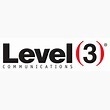Level 3: Focus SDN/NFV on Enterprise Issues
Businesses are swamped by network complexity and chaos, but service providers can tame that for them, says Andrew Dugan.
September 13, 2016

DENVER -- NFV & Carrier SDN -- Level 3 Communications is testing new NFV-based capabilities that would make it much easier for enterprises to turn up and configure new services and as Andrew Dugan, group VP and interim lead for technology and IT shared today, his 20-year-old daughter was the first successful trial.
Dugan told the Light Reading NFV & Carrier SDN event crowd today that it took his daughter, a college psychology major, less than half an hour to set up a new service to their house and configure two network boxes, a managed router and a WiFi router, using a portal recently developed by a team of engineers.
Figure 1: Level 3's Andrew Dugan 
There is much more required to actually make such capabilities work as a commercial service, he said, including integration into network systems and operations, but that is the direction Level 3 Communications Inc. (NYSE: LVLT) is headed in using NFV and SDN to try to simplify the connectivity challenges enterprises are facing.
"We often talk about SDN and NFV as technologies and we see press releases of how people are leveraging them in spot areas," Dugan commented in his keynote. "But we need to not lose sight of the big picture and that is enabling enterprises to solve their complex network needs, helping them simplify and bring order to what is, today, a chaotic environment."
{Image1}
That chaos is created by the increasing digitalization of all business, he said. He used a coffee shop as an example: Where once it would only have required a phone line and a connection for a point-of-sale terminal, now the same coffee shop needs managed WiFi for its guests, an internal WiFi network as well that is secure for mobile PoS, and support for applications that instantly register account balances and reward points.
"The amount of infrastructure required has transformed their business overnight," Dugan said. "And these are not networking companies or IT companies, but they are being forced to build out infrastructure to support their businesses, and they are looking for ways to simplify the chaos. And they are looking for people in this room to help them with that challenge."
SDN and NFV have the capability to transform the way network operators interact with and deal with enterprise customers, he added. "We started off enabling internal efficiencies, but increasingly we are exposing those capabilities to the customer."
Specifically, enterprises need more bandwidth, delivered more quickly and at lower cost, he said. But it's not even that simple. Dugan pointed to one business customer who knows that the first Tuesday of every month will bring a surge in user complaints because that's the day Microsoft pushes out software patches for its operating systems and business applications, and those eat up bandwidth and create work problems for her company's staff. The customer can hardly afford to turn up additional MPLS circuits just for that once monthly surge, but having access to Internet-based secured bandwidth that would make it possible to handle the overflow, and that's something an SD-WAN could enable.
Enterprises also face growing security threats, as more of their business depends on network connections and apps and the threat vectors continue to increase, he said.
Want to know more about carrier SDN strategies? Check out our dedicated SDN content channel here on Light Reading.
All of this is creating new opportunities for network operators, particularly those willing to give their customers new flexibility for using both Internet links and dedicated MPLS connections as backup to each other, and for their appropriate applications, Dugan said.
NFV can be leveraged to allow services to be turned up and down as needed, while SDN can enable greater customer control, including dynamic services that match today's cloud connectivity. Level 3 today offers Adaptive Network Control for Ethernet services but is working toward giving customers similar visibility and control for the full range of service offerings, he said, including the ability to rapidly turn up security services in advance of, or even in the face of, things such as distributed denial of service attack.
— Carol Wilson, Editor-at-Large, Light Reading
You May Also Like


_International_Software_Products.jpeg?width=300&auto=webp&quality=80&disable=upscale)







